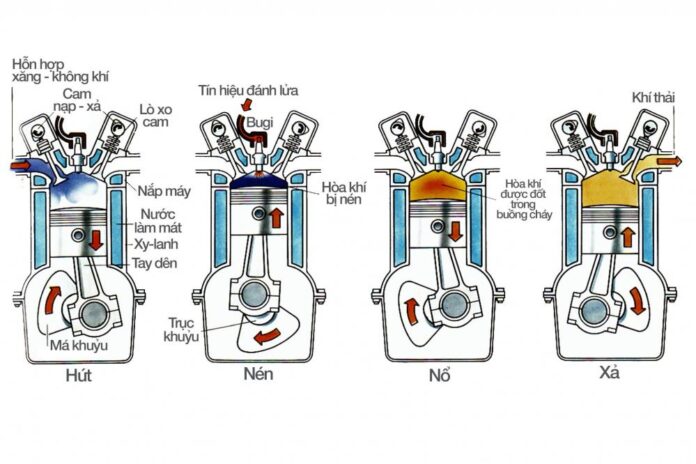Nowadays, most of the common motorcycles we use tend to be four-stroke engines. On the other hand, the two-stroke engines, characterized by their distinctive “putt-putt” exhaust sound and white smoke, are no longer in use due to their lower efficiency and environmental friendliness. So, how do two-stroke and four-stroke engines work, and what are the differences that led to this change? Let’s explore this in the article below.
Before comparing, let’s understand the structure and operation of two-stroke and four-stroke engines. Once we grasp these concepts, the comparison between the two types of engines will become clearer and more comprehensible.
Two-Stroke Engines Have Two Main Phases: Power and Compression
Two-stroke engines have a simple structure and operating process, consisting of two main strokes.
Simple Structure of a Two-Stroke Engine
First Stroke: Power and Preliminary Compression
- The piston begins to approach the top dead center. The ignition system ignites the mixture in the combustion chamber above the piston, increasing temperature and pressure. The piston moves downward, generating mechanical power.
- In the space below the piston, the newly inducted air-fuel mixture is compressed by the downward motion of the piston.
- In the final stage of the piston’s downward movement, the exhaust port and the transfer port open. The compressed fresh mixture in the crankcase moves through the transfer port into the cylinder, displacing the burnt gases through the exhaust port.
Second Stroke: Compression and Induction
- As the piston moves upward, the exhaust port and then the transfer port close.
- During the piston’s upward motion, the air-fuel mixture in the cylinder is further compressed, and just before the piston reaches the top dead center, it is ignited.
- In the crankcase below the piston, fresh air-fuel mixture is inducted through the inlet port.














































